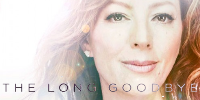May 01, 2011
Publication title: Avenue Edmonton, vol. -, Iss. -, pg. –
Place: Edmonton
Writer: Jaelyn Molyneux
Sarah McLachlan Inspires the Alberta Ballet
Sarah McLachlan helps Alberta Ballet go for the pop culture hat trick with Fumbling Towards Ecstasy, a ballet inspired by and choreographed to her music.
The timing seemed right. The pair was backstage at the dress rehearsal for the opening ceremonies, which Grand-Maître choreographed and during which McLachlan performed. His dance steps and her music seemed to be a winning combination. So Grand-Maître asked if he could choreograph an entire ballet to McLachlan’s music.
“I immediately said, ‘Yes, absolutely,’” says McLachlan. “I saw what Jean could do and the calibre of his work and I trusted him implicitly. It was an honour to be asked.”
McLachlan had seen The Fiddle and The Drum, which Grand-Maître choreographed to the music of Joni Mitchell for Alberta Ballet in 2007 and was restaged for Vancouver’s Cultural Olympiad. Grand-Maître’s second pop culture collaboration, Elton John’s Love, Lies, Bleeding, was less than three months from its world premiere. So on a balmy afternoon in February 2010, McLachlan signed on to be the third artist to team up with Alberta Ballet. The show plays in Edmonton May 13 and 14.
A year passed between that initial conversation and the moment McLachlan first saw the dance steps of Fumbling Towards Ecstasy take form. This past March, McLachlan stopped in Calgary to perform a sell-out concert at the Jack Singer Concert Hall. Grand-Maître’s ballet, which takes its name from her 1993 album, was still two months away from its premiere and nowhere near completion. But there were bits to show McLachlan — an hors d’oeuvre, Grand-Maître called it.
With McLachlan settled into a folding chair in Alberta Ballet’s rehearsal studio, 18 dancers in pointe shoes assembled to show the pop star what they could do with her music.
The stereo was cued to “Vox,” McLachlan’s first single which launched her career in 1988. Next came the choreography for “Building a Mystery” from Surfacing, McLachlan’s 1997 follow-up to Fumbling Towards Ecstasy, which earned her two Grammy Awards and sold more than 11 million copies.
Finally, the dancers cleared to the sides of the mirrored room leaving only two behind to glide gracefully in tandem to another McLachlan classic, “Hold On.” It was kinetic poetry. When the pair of dancers came to a final dramatic pause, the room filled with a handful of lucky onlookers eagerly watching McLachlan to see her reaction.
“I just started crying,” recalls McLachlan. “I couldn’t help it. It was so beautiful.” The tears confirmed she had made the correct decision to hand over her repertoire to Grand-Maître and give him carte blanche to create what he wanted.
McLachlan shared with him the significance of certain songs and Grand-Maître chose 15 of them to weave into his story of love, loss and betrayal. As you might expect from a ballet inspired by McLachlan, who is famous for buoying feminine pride in the music industry in the late 1990s with Lilith Fair, sisterhood and female empowerment are at the ballet’s thematic core. The ballet is based on the odyssey of a woman’s life — not necessarily McLachlan’s — that begins with the innocence of childhood and ends with the wisdom of age.
Six dancers play the lead supported by a cast of “sisters,” who make appearances to provide strength and compassion when needed. The male characters help facilitate love and heartbreak, while providing the muscle for breathtaking lifts. “I think my music comes from a human perspective, influenced by my being a woman,” says McLachlan.
While the ballet’s story was inspired by McLachlan’s own lyrics, it was Grand-Maître who ultimately chose the direction of the ballet. He considers her music “choreographable to the maximum,” but didn’t conceive of a single step until he had an intense conversation with her about her art and philosophies, vulnerabilities and triumphs.
“We sat for hours talking,” says McLachlan. “Jean asked me really unusual questions, like what colours or seasons I saw with a particular song. He asked me about my first love and first betrayal, and I was really open with him.”
Grand-Maître was digging for inspiration. Like his earlier Mitchell and John ballets, Fumbling Towards Ecstasy is not a biography, but rather a portrait created using each artist’s passions and perspectives as its brush strokes.
“For Joni, it was how she looked at the world, pollution and war. For Elton, it was about drug addiction, homosexual repression and respect for people with AIDS,” says Grand-Maître. “Fumbling Towards Ecstasy is not about capturing all of Sarah. You cannot capture an artist in a few hours. We have to capture a truth about her that is new for the audience, but also intimate and real.”
To that effect, McLachlan also provided 25 personal ink drawings, which will be layered into video projections. The set is also heavily influenced by McLachlan’s relationship with the ocean as she lives on the West Coast. The overall look for the dancers is the vision of Calgary-based designer Paul Hardy, who was recruited to create the ballet’s 96 different costumes.
Hardy and McLachlan have a friendship that goes back to the 2009 Juno Awards when she received the Allan Waters Humanitarian Award and the designer styled her for the occasion. It was a career milestone for both artists.
“I remember specifically when I did the fittings at Sarah’s house for the Junos. She put on the dress, turned to look at the mirror and her mouth fell open,” says Hardy. “It was like something transcendent happened, as if she had regained an understanding of her beauty after having children. It was a profound experience for me to realize the psychology of putting on a great garment and how it can make you feel.”
With the help of choreography notes from Grand-Maître and McLachlan’s personal thoughts on her own songs, Hardy started the creative process by immersing himself in McLachlan’s music.
“There is a layered and textural quality to her music — not just in the content, but also in sound quality,” says Hardy. “It has an ethereal lyricism.”
Hardy used textiles with a fluidity and weightlessness to them and layered sheer fabrics upon each other. As the dancers chasse and jeté, the costumes float as if choreographed themselves. And if you think standing on stage in front of thousands clothed in nearly invisible fabrics makes you vulnerable, you’re right. That is the emotional point Hardy is going for.
“We want to engage the audience in a suspended sense of time and space in an intimate way,” says Hardy. “A person becomes vulnerable and transparent, not just from a physical point of view, but from life circumstances. That is the reality of people with public profiles like Sarah; they expose themselves on a daily basis. Vulnerability is something we wanted to capture through the entire performance.”
In addition to being mostly sheer, the costumes are made with soft neutrals and oranges and blues — the colours of the official McLachlan tartan Hardy had woven in Scotland to include in the costumes. Florals also figure prominently in fabric choice and floral appliques are sewn into the costumes to create a tapestry-like look, another thematic link between the costumes and the emotional design of the ballet.
“The back of a tapestry has knotted threads and irregularities but, when you flip it over, it creates an amazing picture, it’s like a parable for life and that is the best way to describe the feeling of the show,” says Hardy. “Regardless of whether you are a man or a woman, you have circumstances that inform your life and they are not always pleasant, but they make you into the person that you are.”
In addition to helping develop the esthetic of the ballet, Hardy ups the Alberta contingent of the production. It is the first time Alberta Ballet has tapped into the talents of a local designer for costume design. This move helps the company continue to be a local success, which is a necessary foundation if it hopes to gain international recognition.
Grand-Maître points to the support Quebecers show for Cirque du Soleil as a model for how Albertans’ support for their ballet company could grow.
“If we can make people proud of their local artists and know they can do creations here that are as important as what is done in New York or Toronto, then we have come a long way in how the community here relates to the arts and the maturity and sophistication and evolution of art in this province,” he says.
The mass appeal of Alberta Ballet’s growing pop music repertoire means it can reach other markets and audiences it wouldn’t have been able to otherwise. The Fiddle and the Drum received coverage in the New York Times and the International Herald Tribune distributed across Europe. Fumbling Towards Ecstasy garnered national media attention as soon as the project was announced with talks of it touring North America before the choreography was even complete.
Grand-Maître is already thinking of other musical icons with whom he’d like to work. His wish list includes Leonard Cohen, Peter Gabriel and fellow Albertan k.d. lang. He hopes that, just as Mitchell’s ballet convinced John and McLachlan to hand over their music, Fumbling Towards Ecstasy will lead to more collaborations that are both box office and artistic successes.
“We don’t want to do schlock,” says Grand-Maître. “We want to create poetry, beautiful visuals and metaphors for the words and music of these living composers. It is a new kind of repertoire that can bring Alberta Ballet to places it never dreamed of going.”












